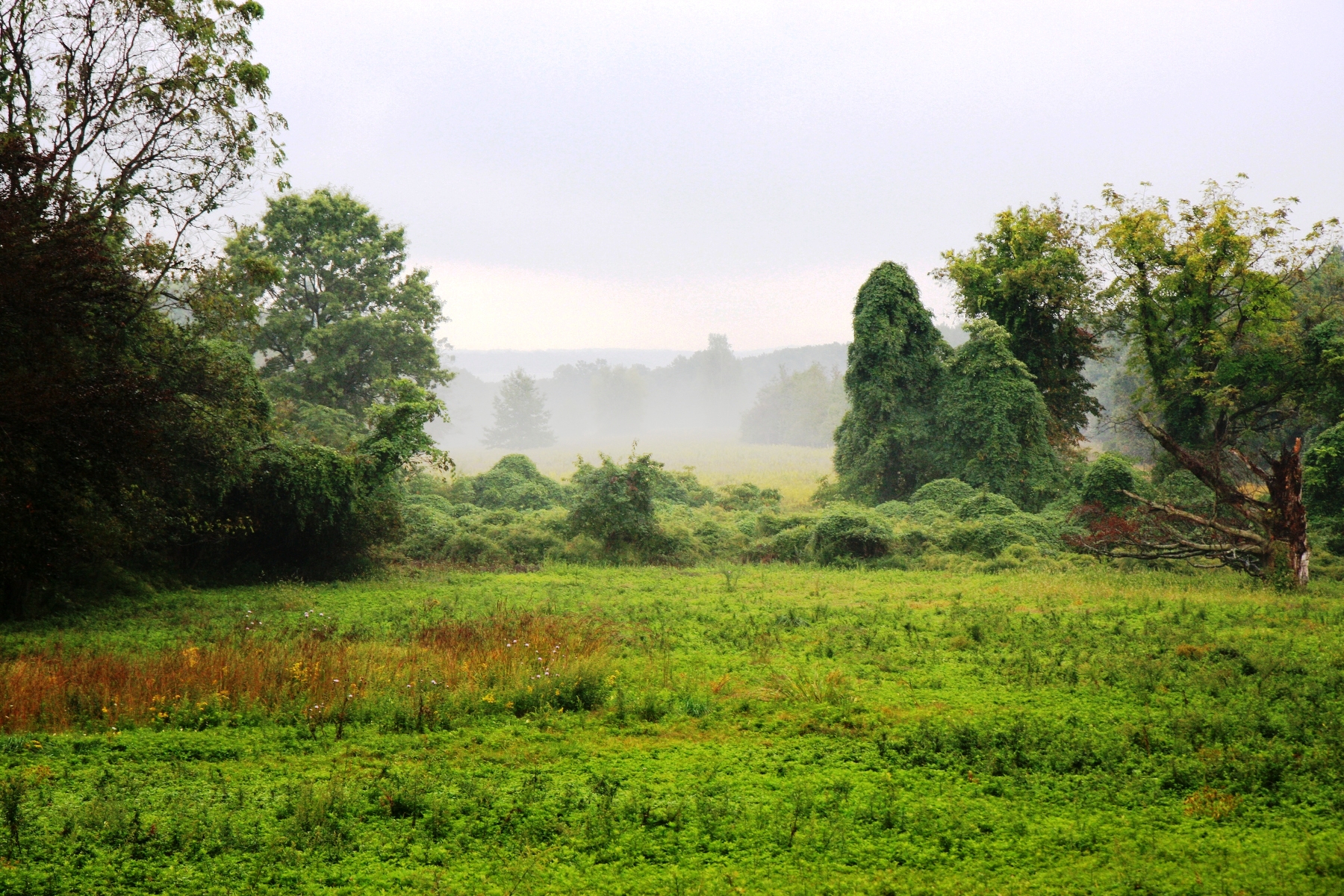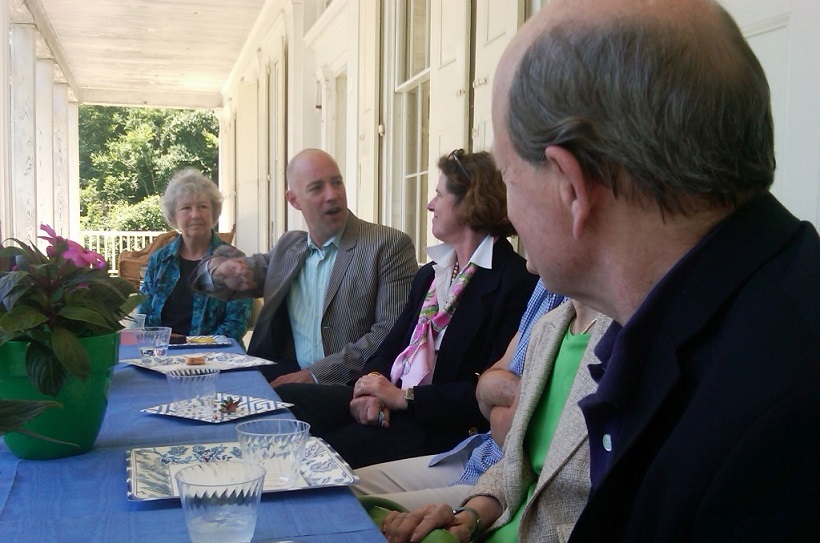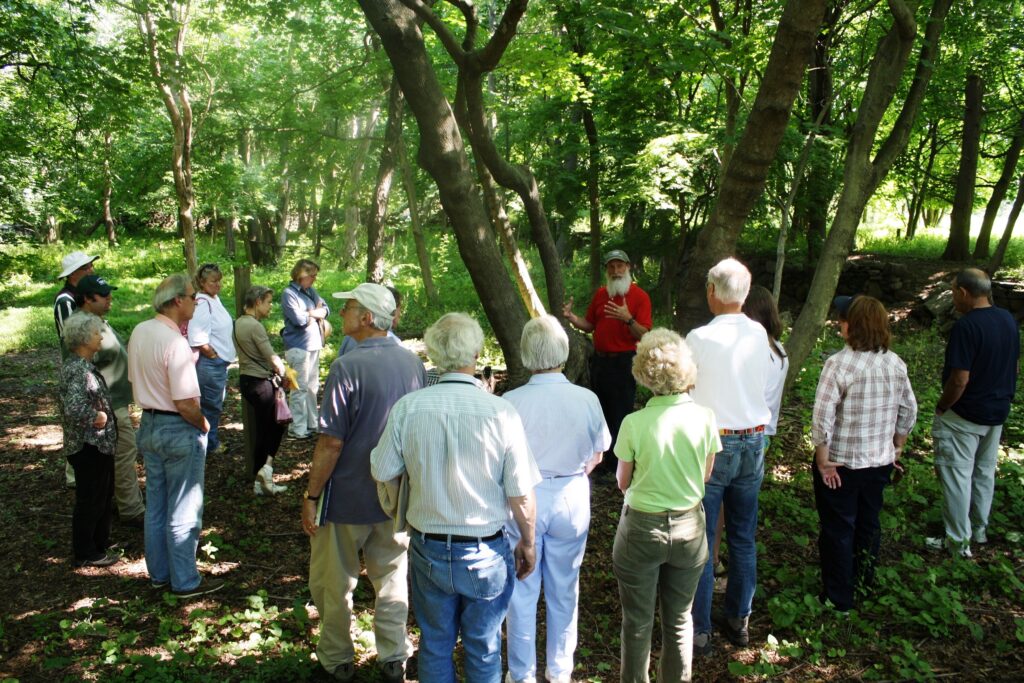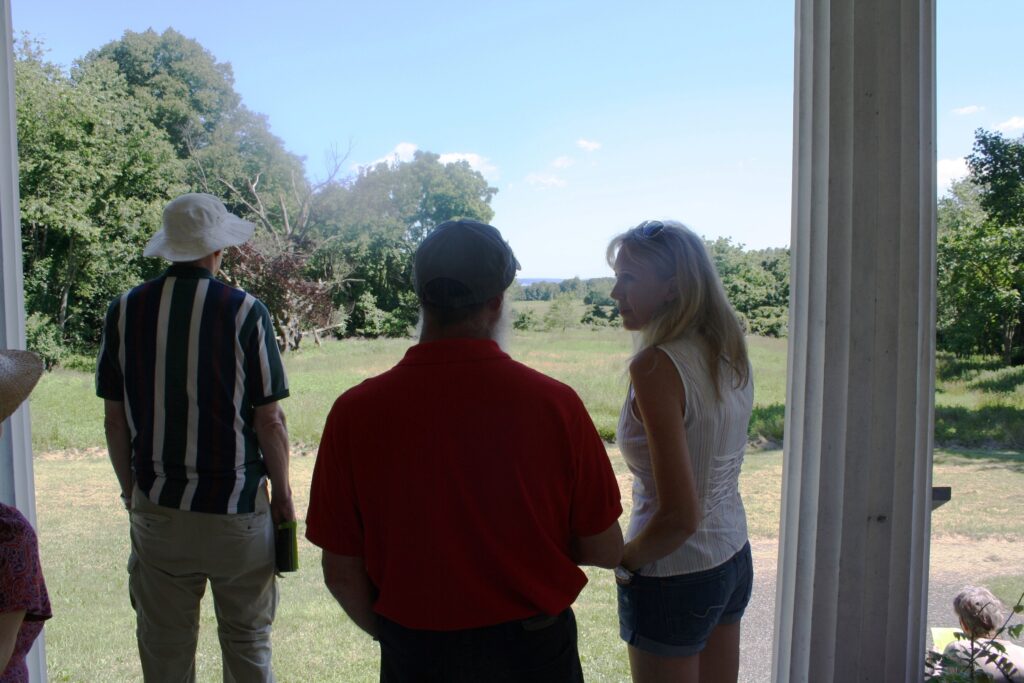Photo of Jay Meadow and ha ha overgrown with invasive species in 2009
On June 15 and 16, the Jay Heritage Center (JHC) hosted its second Sustainable Landscape Weekend featuring exceptional conversations with Charles Birnbaum, President and Founder of The Cultural Landscape Foundation, DC and noted ecologist Tom Wessels, Chairman of the Center for Whole Communities (CWC), Vermont. The goal of the two-day event was to stimulate dialogue about ways to preserve and interpret the 23-acre Jay Estate with special focus on vanishing features like the viewshed that have been subsumed by invasive species. This free public program was made possible thanks to a grant from Con Edison and was co-sponsored by Audubon NY and The Little Garden Club of Rye.
On the first day, Charles Birnbaum presented a talk that reflected a deep understanding of landscapes forged during his fifteen years as the Coordinator of the National Park Service Historic Landscape Initiative (HLI). His observations were fascinating, enlightening and thought provoking. After reviewing a photo gallery of New York State architectural treasures and National Historic Landmark sites that his audience knew well, he astonished everyone by revealing how many of their landscapes do not yet have historic designation, despite the imprint and pedigree of sometimes more than one prominent designer like Frederick Law Olmsted or Calvert Vaux of Central Park fame. For example, few people realize that the Jay Estate and gardens bear the imprimatur of Brinley & Holbrook, landscape architects well known for their work at the New York Botanical Garden and our own Rye Town Park.
Shaping his discussion to run the gamut of challenges to maintaining or rehabilitating these treasured spaces, he compared the Jay Estate in Rye, NY and Peavey Plaza in Minneapolis, MN – the two projects are not dissimilar despite their occupation of different centuries – each demands a treatment that respects original intentions and viewsheds but also allows for modern and relevant public use and access. Following a dynamic and insightful presentation on how we see and value landscapes, Charles talked with JHC guests over lunch. With the help of fellow landscape professionals and enthusiasts like Peter Rolland, Jane Cooke, Jay Cantor, and Alison Beall, curator from Marshlands Conservancy, Charles framed a lively discussion about stewardship of the Jay Estate. He also touched upon landscapes at Bartow Pell with its plan by Delano & Aldrich. We also discussed how to protect the legacies of landscape architects like Dan Kiley.
On the the second day of the symposium, participants heard from ecologist Tom Wessels. Wessels is founding director of the master’s degree program in Conservation Biology at Antioch University New England and at CWC his work fosters inclusive communities that are strongly rooted in place and where all people—regardless of income, race, or background—have access to and a healthy relationship with land. Wessels took participants on a “forest forensics” walk around the Jay Estate to learn how to identify the visible clues left behind on trees that belie what types of storms or natural weather phenomenon affected their growth pattern or hastened their demise. For example, the effects of winds of the Hurricane of 1938 over a swathe of States on the East Coast are still noticeable through the presence of decades-old “cradles and pillows” which form when enormous trees are felled.
We also spent a great deal of time talking about conservation of native trees and bringing back the American chestnut. Also the fact that trees communicate – through their roots, through pollen release and more. Participants standing in the Jay gardens learned about the ecosystem underneath our forests and feet. Tom trained everyone’s eyes to look for clues in old stone walls and even stumps. Does the black residue on a rotting log indicate death by fire or a fungus? Participants left enriched with a new visual vocabulary including “masting,” the coordinated or supersized volumes of seed production by oaks at certain times each decade (think of those years when there are thousands of acorns in your yard!) Lastly, JHC President Suzanne Clary and Wessels discussed the opportunities for restoring habitat for bobolinks and other grassland birds at the Jay Property in Rye, NY.
_______________________
More about the speakers:
Charles Birnbaum’s recent projects include two web-based initiatives: What’s Out There? (a searchable database of the nation’s designed landscape heritage) and Cultural Landscapes as Classrooms. His has authored and edited numerous publications including Shaping the American Landscape (UVA Press, 2009), Design with Culture: Claiming America’s Landscape Heritage (UVA Press 2005), Preserving Modern Landscape Architecture (1999) and its follow-up publication, Making Post-War Landscapes Visible (2004, both for Spacemaker Press), Pioneers of American Landscape Design (McGraw Hill 2000) and The Guidelines for the Treatment of Cultural Landscapes (National Park Service, 1996). In 1995, the ASLA awarded the HLI the President’s Award of Excellence and in 1996 inducted Mr. Birnbaum as a Fellow of the Society. He served as a Loeb Fellow at Harvard’s Graduate School of Design during which time he founded TCLF. In 2004, Mr. Birnbaum was awarded the Rome Prize in Historic Preservation and Conservation and spent spring/summer of that year at the American Academy in Rome. In 2008, he was the visiting Glimcher Distinguished Professor at Ohio State’s Austin E. Knowlton School of Architecture. In 2008 the ASLA awarded Charles the Alfred B. LaGasse Medal and in 2009 the President’s Medal. He is currently a Visiting Professor at the Columbia University Graduate School of Architecture Planning + Preservation and a frequent blogger for The Huffington Post.
Tom Wessels is former chair of the Robert and Patricia Switzer Foundation that fosters environmental leadership through graduate fellowships and organizational grants. He served as an ecological consultant to the Rain Forest Alliance’s SmartWood Green Certification Program. In that capacity Tom helped draft green certification assessment guidelines for forest operations in the northeastern United States and adjacent Canada. His books include: Reading the Forested Landscape, The Granite Landscape, Untamed Vermont, The Myth of Progress, and Forest Forensics: A Field Guide to Reading the Forested Landscape.




